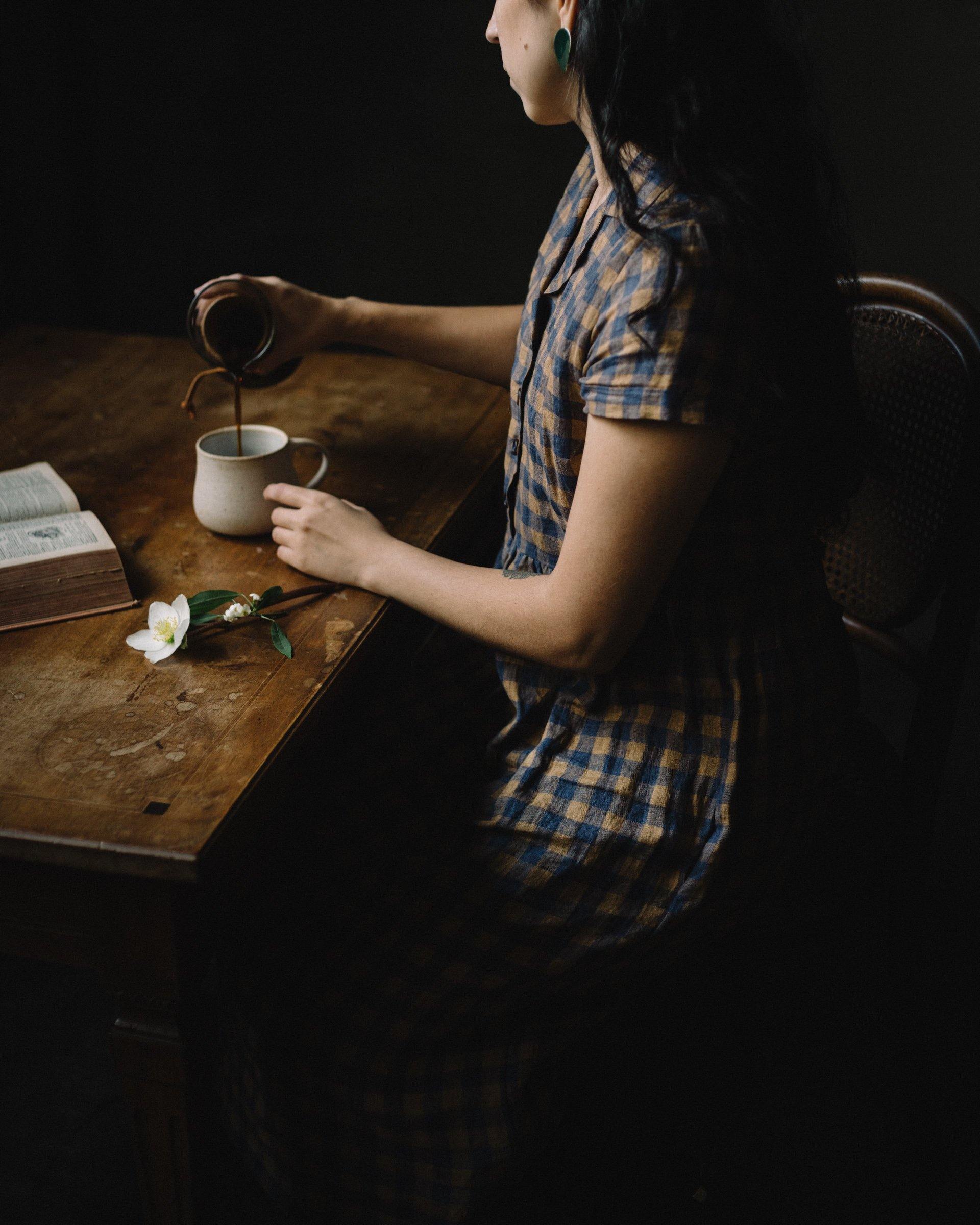The tea dress or gown, characterized by its loose comfortable fit, emerged as a centrepiece of an artistic reform in England in the 1880s. It contrasted the tight, boned corset dresses that were fashionable at the time and allowed women a comfortable, breathable garment to wear at home.
Inspired by other indoor garments such as the wrap or a robe, the tea gown was originally created for women to only wear in the privacy of their own home. It spread in popularity and suddenly in the 1890s and early decades of the 20th century we begin to see women wearing them at events such as the theatre and dinner parties, alongside socialites and the bourgeoisies wearing them in portraits.
The tea gown was a bit of a rebel for its time. It emerged under a counter culture movement in the 1880s called the Aesthetic Movement. This movement was inspired by a belief that women’s health was directly connected with their beauty. The artistic community believed contemporary women’s dress to be unhealthy and impractical and sought to promote the loose-fitting styles inspired by classical and medieval romanticism instead. The result was a style called ‘artistic dress’, an exotic fashion that naturally outlined a woman’s shape. The tea gown came under the category of artistic dress, and held a prominent role in its spread of popularity.
Many women embraced it as a cultural movement, wearing tea gowns in public to be associated with the artistic movement at a time when it was seen as daring or bold to do so. Soon after, in the early 20th century, artistic dress became heavily associated with the Sufragette movement. Suffragettes aimed to visually brand themselves by conforming to fashion and femininity whilst simultaneously opposing the restrictive role of women at the time. Their style was incredibly effective and highlighted the power and duality of women’s dress.
Artistic style and the tea gown gave the wearer a way to express their creativity and became a symbol of authenticity. Focus was no longer on the forced silhouette of a women, with a looser waist and an abundance of shapes and styles, the tea gown focused more on who a woman was. It represented a natural state of woman being able to relax and enjoy, rather than being constricted and presentable.

The tea gown and its history are close to Pyne & Smith’s heart; our muse, so to speak. We are awe-inspired by the tea gown and the artistic style during this period because we can relate to the drive behind creating a loose, comfortable and practical dress for women at a time when fashion is dictated by impracticality and discomfort (Hello, dresses without pockets!). We were motivated to create a dress that recognised the complexity of being a women and gave women the ability to embrace femininity without sacrificing their own authenticity. This is why the versatility and timeless appeal of the tea gown and its inspiration can be seen in every dress we make.
Bibliography
Cunningham, P., 2003. Reforming Women’s Fashion, 1850-1920. Kent: Kent State University Press.
Wahl, K., 2013. Dressed As In A Painting. Women And British Aestheticism In An Age Of Reform. New England: University of New Hampshire.
